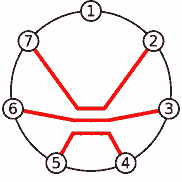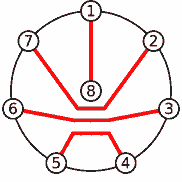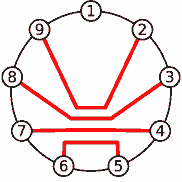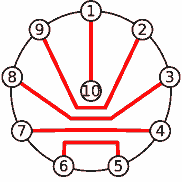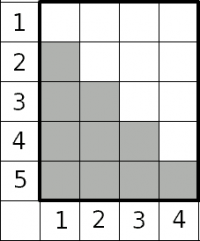Hi, everyone!
I'm having a bit of a problem with a simple math question that I'm too embarrassed to admit that I can't come up with an answer by myself, as I haven't used anything more than basic arithmetic since I graduated years ago.
My question goes like this:
If I'm hosting a chess tournament with a total of 30 players, where each player would have to play against each other 10 times, how many games would be played in total in this tournament?
Naturally, we're not going to have players play against "themselves" as it wouldn't make sense.
So, for example, Player 1 would play against Player 2 10 times, then Player 1 would play against Player 3 10 times, then against Player 4 10 times, and so on until the last player, in which case it would reset it back to Player 2 playing against Player 3 10 times, then against Player 4, then 5, etc.
Then I would simply calculate the total sum of matches played in the tournament, who won the most matches, who lost the most, etc.
I thought the math was simple, just multiply 30 x 10 and there you go, 300 matches, but when I think about it, it just doesn't add up, and so instead of manually trying to count it out, I'm asking for help from you guys in finding the correct way on how to calculate things like this.
Also, apologies if this is posted in the wrong subforum, I was hesitant on whether or not to post this in the "Arithmetic" or "Probability / Statistics" category, so I chose this one, thinking it'd be more appropriate here than there.
I'm having a bit of a problem with a simple math question that I'm too embarrassed to admit that I can't come up with an answer by myself, as I haven't used anything more than basic arithmetic since I graduated years ago.
My question goes like this:
If I'm hosting a chess tournament with a total of 30 players, where each player would have to play against each other 10 times, how many games would be played in total in this tournament?
Naturally, we're not going to have players play against "themselves" as it wouldn't make sense.
So, for example, Player 1 would play against Player 2 10 times, then Player 1 would play against Player 3 10 times, then against Player 4 10 times, and so on until the last player, in which case it would reset it back to Player 2 playing against Player 3 10 times, then against Player 4, then 5, etc.
Then I would simply calculate the total sum of matches played in the tournament, who won the most matches, who lost the most, etc.
I thought the math was simple, just multiply 30 x 10 and there you go, 300 matches, but when I think about it, it just doesn't add up, and so instead of manually trying to count it out, I'm asking for help from you guys in finding the correct way on how to calculate things like this.
Also, apologies if this is posted in the wrong subforum, I was hesitant on whether or not to post this in the "Arithmetic" or "Probability / Statistics" category, so I chose this one, thinking it'd be more appropriate here than there.

